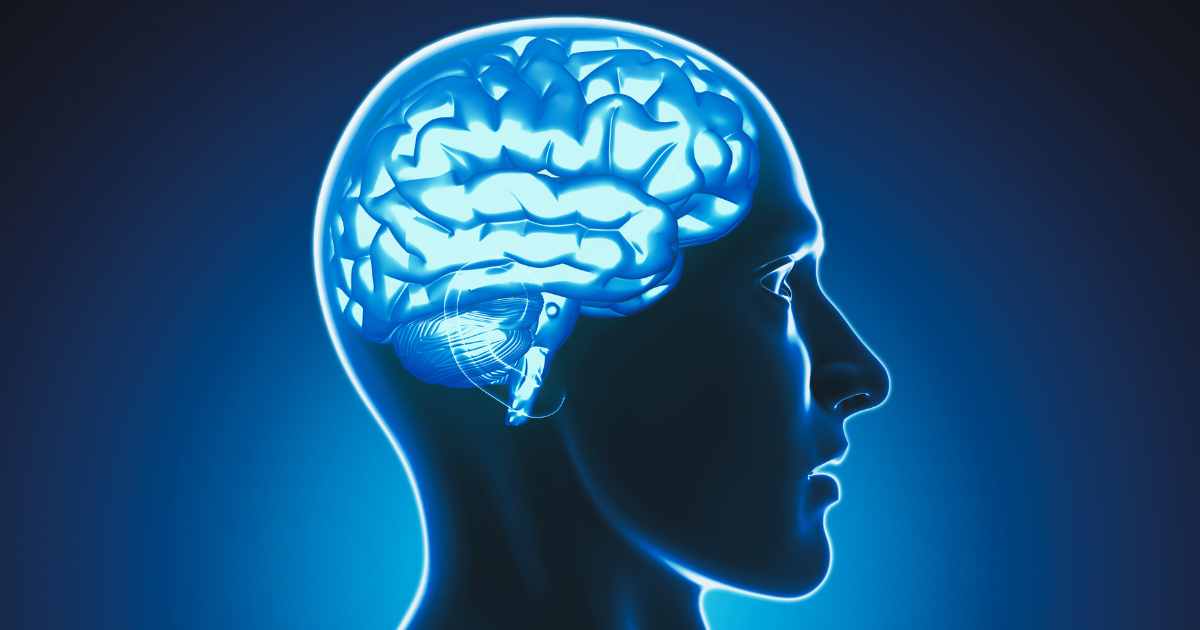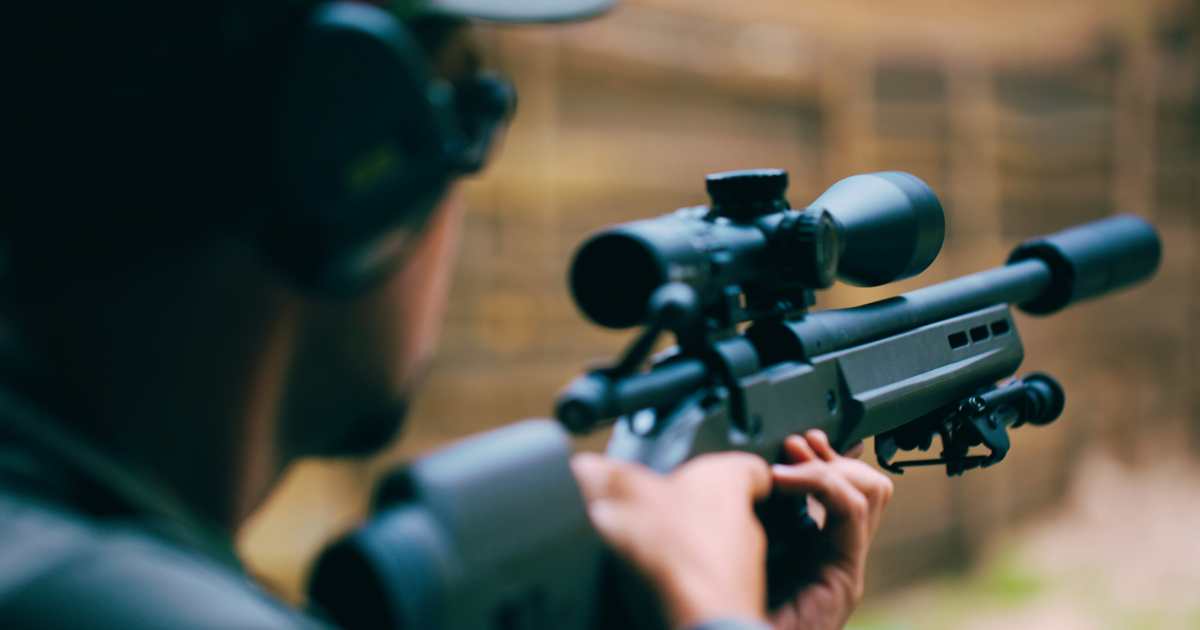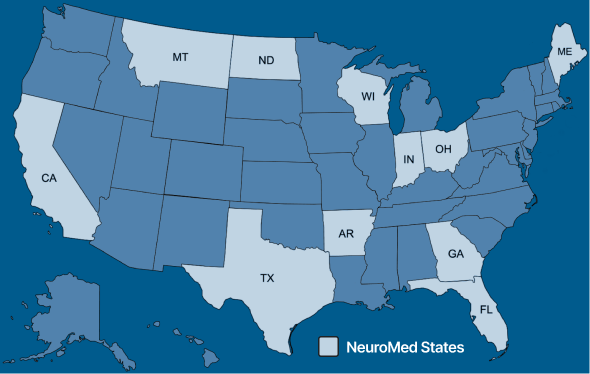New Tinnitus Research on the Migraine Connection
My research team at the University of California, Irvine has been doing ground-breaking tinnitus research in the past decade, focusing on the way that the migraine reaction in the brain affects hearing and balance. Here are the general categories of some selected publications that we’ve included for you to review.
- Tinnitus and Otologic Migraine
- Meniere’s Disease and Migraine
- Hyperacusis and Migraine
- Aural Fullness and Migraine
- Sudden Hearing Loss and Migraine
- Stapedial Myoclonus and Migraine

Many of these links include full-text versions of these tinnitus research studies with downloadable PDFs. When only the abstract is available and you’d like to read the complete article, feel free to contact us at [email protected] and we’ll email you a PDF copy.
Otologic Migraine and Tinnitus Research
Our university pioneered the term “otologic migraine” in tinnitus research, elucidating the fundamental connection between vertigo, tinnitus, and the migraine reaction in the brain. Despite previous awareness of vestibular migraine occurring without headaches, prevailing misconceptions about tinnitus hindered recognition of its association with migraine. Through a series of papers and reviews, we outlined how otologic migraine leads to ear-related disorders, including tinnitus.
2022: “Tinnitus and Subjective Hearing Loss are More Common in Migraine: A Cross-Sectional NHANES Analysis
Abstract
Objectives:
To investigate whether migraine is independently associated with tinnitus and subjective hearing loss (HL) in a large national database.
Methods:
The de-identified 1999-2004 National Health and Nutrition Examination Survey database was retrospectively queried for subjects aged 18-65. HL and tinnitus were subjectively reported by subjects.
Results:
A total of 12,962 subjects (52.9% female) with a mean age of 38.1±14.6 years were included. This consisted of 2,657 (20.5%), 2,344 (18.1%), and 2,582 (19.9%) subjects who had migraine, subjective-HL, and tinnitus, respectively. In patients with tinnitus or subjective-HL, migraine was reported in 35.6% and 24.5%, respectively. Migraineurs were more likely to have subjective-HL (25.0% vs. 16.6%, p<0.001) and tinnitus (34.6% vs. 16.9%, p<0.001) compared to the non-migraineurs. This corresponded to migraine having an odds ratio of 1.5 (95% CI 1.3–1.7, p<0.001) and 2.2 (95% CI 2.0-2.4, p<0.001) for subjective-HL and tinnitus, respectively. After adjusting for confounders, subjective-HL (OR=1.2, 95% CI 1.1-1.4, p=0.003), tinnitus (OR=2.1, 95% CI 1.9–2.3, p<0.001), and neck pain (OR=4.0, 95% CI 3.6-4.5, p<0.001) were more common in migraineurs. Among migraineurs, a higher proportion of those with tinnitus also had subjective-HL compared to those without tinnitus (40.0% vs. 15.3%, p<0.001), and a higher proportion of those with subjective-HL also had tinnitus compared to those without HL (58.1% vs. 27.3%, p<0.001).
Conclusions:
This study suggests an independent association between migraine with subjective-HL and tinnitus. Otologic migraine, which is the effects of migraine on the ear, may be partly responsible for the link between HL, tinnitus, neck pain, and migraine.
2022: “A Proposed Association between Subjective Nonpulsatile Tinnitus and Migraine“
Abstract
Objective: Tinnitus is defined as the perception of sound in the absence of an external source. We propose the hypothesis that migraine can cause exacerbation of tinnitus in some patients.
Methods: English literature from PubMed has been reviewed.
Results: Studies have reported a high prevalence of cochlear symptoms in patients with migraine headaches and up to 45% of tinnitus patients have been shown to concomitantly suffer from migraine. Both conditions are thought to stem from central nervous system disturbances, involving disruption of the auditory and trigeminal nerve pathways. One proposed mechanism of this association is the modulation of sound sensitivity by trigeminal nerve activation of the auditory cortex during migraine attacks, resulting in tinnitus fluctuation in some patients. Increased brain and inner ear vascular permeability resulting from trigeminal nerve inflammation, can also cause observed headache and auditory symptoms. Tinnitus and migraine also share a number of symptom triggers including stress, sleep disturbances, and dietary factors. These shared features may help explain promising results of migraine therapies for the treatment of tinnitus.
Conclusion: Given the complex association between tinnitus and migraine, further investigation is needed to identify the underlying mechanisms and determine the optimal treatment strategies for managing migraine-related tinnitus patients.
2022: “Migrainous Vertigo, Tinnitus, and Ear Symptoms and Alternatives“
Abstract
Migraine headaches frequently coexist with vestibular symptoms such as vertigo, motion sickness, and gait instability. Migraine-related vasospasm can also damage the inner ear which results in symptoms such as sudden sensorineural hearing loss (SSNHL) and tinnitus. The pathophysiology of these symptoms is not yet fully understood and despite their prevalence, there is no universally approved management. Due to patient belief, non-universal effectiveness, cost, and fear of the side effects of conventional treatments, many patients with migraine-related symptoms seek complementary and integrative medicine (CIM) alternatives. Traditional medicine (acupuncture, herbal supplements, and manual therapies) originated in China about 3,000 years ago, then spread to Korea and Japan with Buddhism. However, some in the U.S. still regard CIM therapies with skepticism mainly because of the lack of randomized clinical trials. A cross-sectional study conducted between 2002 and 2012 reported that 33.2% of adults in the US use complementary health approaches (dietary supplements, deep-breathing exercises, and yoga), with 75% of patients not informing their physician about this practice. In this review, we summarize the data on CIM in treating patients with migrainous ear disorders.
2023: “Vestibular and Auditory Manifestations of Migraine“
Abstract
Purpose:
The purpose of this narrative review is to discuss current literature about vestibular migraine and other cochleovestibular symptoms related to migraine.
Recent findings:
Vestibular migraine affects 2.7% of the United States population. Misdiagnosis is common. The pathophysiology is currently unknown but new research shows that CGRP, which is implicated in migraine headaches, is expressed in the audiovestibular periphery. A recent large-scale placebo controlled trial looking at metoprolol for vestibular migraine was terminated early due to poor recruitment; however, at study completion, no differences were seen between treatment arms. Many other audiovestibular symptoms have been shown to be associated with migraine, including tinnitus, hearing loss, aural fullness, otalgia and sinus symptoms. Migraine is also associated with risk for developing numerous otologic conditions, including Meniere’s disease, vestibular loss, BPPV, and sudden sensorineural hearing loss. There is now some evidence that patients may experience fluctuating hearing loss and aural fullness without vertigo in association with migraine, which is called cochlear migraine.
Summary:
Migraine can cause a variety of audiologic and vestibular symptoms, and further research is required to understand how migraine affects the inner ear.
2023: “Migraine Management for the Otolaryngologist“
Abstract
Objective
To characterize migraine pathophysiology, presentation, and current treatment strategies, specifically in regard to vestibulocochlear manifestations of migraine.
Methods
Narrative review of available literature.
Results
Migraine disorder can be described as a spectrum of otologic manifestations, with vestibular migraine now recognized with fully‐fledged diagnostic criteria. Otologic manifestations are theorized to be due, in part, to trigeminal innervation of the inner ear structures and calcitonin gene‐related peptide (CGRP) expression within the labyrinth. Patients can experience vertigo, aural fullness, enhanced tinnitus, and hearing loss without the characteristic migraine headache, leading to under recognition of these symptoms as migraine‐related. Meniere’s disease, mal de débarquement syndrome, persistent postural perceptual dizziness, and recurrent benign paroxysmal positional vertigo have close associations to migraine and may exist on the migraine spectrum. Migraine treatment consists of two goals: halting acute attacks (abortive therapy) and preventing attacks (prophylactic therapy). Abortive medications include triptans, corticosteroids, anti‐histamines, and anti‐emetics. Pharmacologic prophylaxis in conjunction with lifestyle modifications can decrease frequency and severity of symptoms and include tricyclic antidepressants, calcium channel blockers, anti‐epileptic medications, selective serotonin reuptake inhibitors, serotonin‐norepinephrine reuptake inhibitors, beta‐blockers, gepants, and monoclonal antibodies to CGRP. Promising evidence is emerging regarding the ability of migraine medications to positively treat the various otologic symptoms of migraine.
Conclusion
Migraine disorder manifesting with primarily cochleovestibular symptoms can be challenging to diagnose and manage for practicing clinicians. Patients with various vestibulopathies that are closely related to migraine may benefit from migraine treatment. Lifestyle choices and prophylactic medications are key to satisfactorily preventing acute migrainous attacks and improve function.
2023: “Management of Migraine-Associated Vestibulocochlear Disorders“
Abstract
Migraine is a chronic neurological disorder that frequently coexists with different vestibular and cochlear symptoms (sudden hearing loss, tinnitus, otalgia, aural fullness, hyperacusis, dizziness, imbalance, and vertigo) and disorders (recurrent benign positional vertigo, persistent postural perceptual dizziness, mal de debarquement, and Menière’s disease). Despite evidence of an epidemiological association and similar pathophysiology between migraine and these vestibulocochlear disorders, patients suffering from migraine-related symptoms are usually underdiagnosed and undertreated. Current migraine treatment options have shown success in treating vestibulocochlear symptoms. Lifestyle and dietary modifications (reducing stress, restful sleep, avoiding migraine dietary triggers, and avoiding starvation and dehydration) and supplements (vitamin B2 and magnesium) offer effective first-line treatments. Treatment with migraine prophylactic medications such as tricyclic antidepressants (e.g., nortriptyline), anticonvulsants (e.g., topiramate), and calcium channel blockers (e.g., verapamil) is implemented when lifestyle and dietary modifications are not sufficient in improving a patient’s symptoms. We have included an algorithm that outlines a suggested approach for addressing these symptoms, taking into account our clinical observations. Greater recognition and understanding of migraine and its related vestibular and cochlear symptoms are needed to ensure the appropriate diagnosis and treatment of affected patients.
"I learned more about my tinnitus in the intro call than from my doctor..."
– Alice Lee

Ready for relief? NeuroMed can help.
Meniere’s Disease and Migraine
Meniere’s disease is a condition affecting the inner ear, manifests through episodes of vertigo, fluctuating hearing loss, tinnitus, and sensations of fullness or pressure in the ear. These symptoms, which can occur unpredictably, significantly impact an individual’s balance and overall quality of life and may affect one or both ears. Research indicates that tinnitus is present in 94% of people with Meniere’s disease, with 37% reporting severe tinnitus.
Notably, recent findings from our research team suggest that Meniere’s disease represents a form of atypical migraine. We have achieved notable success in treating this condition using modified migraine prophylaxis protocols, similar to those employed in NeuroMed’s tinnitus management program.
2022: “The Bidirectional Relationship Between Migraine and Meniere’s Disease“
Abstract
We read with great interest the article entitled “Association Between Meniere Disease and Migraine” by Kim et al. In this large case-control study, the authors aimed to investigate the possibility of bidirectional association between Meniere disease (MD) and migraine. Their findings demonstrated a higher occurrence of migraine in patients with MD and vice versa, implying a bidirectional relationship between MD and migraine. We commend the authors for their extensive analysis of this immense population data and for presenting such valuable results. We agree with their conclusion and would like to provide a few insights from our previous studies on this hypothesis.
Although the authors stated that we have to consider migraine medications in MD patients combined with migraine, we believe that the criteria for migraine diagnosis set by the International Headache Society (HIS) are too strict and prevent many patients from receiving the proper treatment. There is a growing body of evidence of both the association and causal relationship between migraine and the development of cochlear symptoms such as hearing loss and tinnitus. Many migraine characteristics such as family history of migraine, motion sickness, and visual motion sensitivity which are high indicators for migraine etiology are found in MD patients who do not fulfill the IHS criteria.3 For this reason, we believe MD patients should be treated with migraine prophylaxis, regardless of whether the IHS criteria for migraine are met or not. Again, we would like to applaud the authors for their outstanding work and support their statement on the bidirectional association between MD and migraine.
2023: “Meniere’s Disease is a Manifestation of Migraine“
Abstract
Purpose of review: To discuss the theory that Meniere’s disease (MD) is a variation of otologic migraine rather than an isolated inner ear condition.
Recent findings: In contrast to the approximately 12% of the general population suffering from migraine headaches, 51-60% of patients with MD experience migraine headaches. While pathognomonic for MD, endolymphatic hydrops has also been identified in patients with vestibular migraine. Treatment with the integrative neurosensory rehabilitation approach (diet and lifestyle changes, magnesium and riboflavin supplementation, and when needed, prophylactic medication) to treat the underlying migraine process has been highly effective in patients with MD.
Summary: MD can be understood as a manifestation of migraine such that patients with MD can be effectively treated with migraine therapies.
Tinnitus, Hyperacusis, and Migraine

Hyperacusis is a condition characterized by increased sensitivity to everyday sounds, leading to discomfort or pain at normal volume levels. Individuals with hyperacusis often perceive sounds as excessively loud, intrusive, or even painful, which can significantly impact their daily activities and quality of life. This heightened sensitivity can be generalized, affecting a wide range of sounds, or specific to certain frequencies or types of noise. The relationship between hyperacusis and tinnitus is notable, as they often coexist and share similar underlying mechanisms.
Research suggests that hyperacusis may develop as a result of changes in central auditory processing, where alterations in neural pathways lead to an amplification of sound perception. Furthermore, the presence of tinnitus, can exacerbate the sensory hypersensitivity experienced in hyperacusis. People with both conditions may find that their symptoms mutually reinforce each other, with heightened sensitivity to sounds intensifying the perception of tinnitus, and vice versa.
Our tinnitus research efforts show that hyperacusis symptoms respond to the same migraine-focussed strategy that we use in NeuroMed’s tinnitus treatment program.
2020: “Efficacy of Multi-Modal Migraine Prophylaxis Therapy on Hyperacusis Patients“
Abstract
Objectives: To evaluate the efficacy of a multi-modal migraine prophylaxis therapy for patients with hyperacusis.
Methods: In a prospective cohort, patients with hyperacusis were treated with a multi-modal step-wise migraine prophylactic regimen (nortriptyline, verapamil, topiramate, or a combination thereof) as well as lifestyle and dietary modifications. Pre- and post-treatment average loudness discomfort level (LDL), hyperacusis discomfort level measured by a visual analogue scale (VAS), and scores on the modified Khalfa questionnaire for severity of hyperacusis were compared.
Results: Twenty-two of the 25 patients (88%) reported subjective resolution of their symptoms following treatment. Post-treatment audiograms showed significant improvement in average LDL from 81.3 ± 3.2 dB to 86.4 ± 2.6 dB (P < .001), indicating increased sound tolerability. The VAS discomfort level also showed significant improvement from a pre-treatment average of 7.7 ± 1.1 to 3.7 ± 1.6 post-treatment (P < .001). There was also significant improvement in the average total score on modified Khalfa questionnaire (32.2 ± 3.6 vs 22.0 ± 5.7, P < .001).
Conclusions: The majority of patients with hyperacusis demonstrated symptomatic improvement from migraine prophylaxis therapy, as indicated by self-reported and audiometric measures. Our findings indicate that, for some patients, hyperacusis may share a pathophysiologic basis with migraine disorder and may be successfully managed with multimodal migraine prophylaxis therapy.
Migraine, Ear Fullness, and Tinnitus
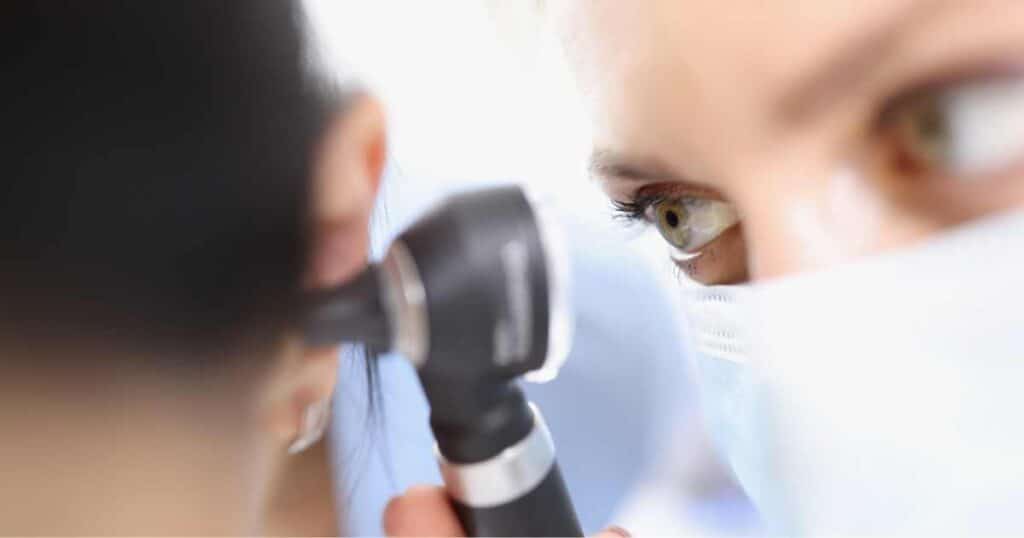
“Aural fullness” manifests as a sensation of pressure or fullness in the ears, often likened to the feeling of blockage or congestion, despite normal eardrum function. This sensation, reminiscent of allergy-related responses, can persist even when conventional allergy medications fail to provide relief. Conditions associated with aural fullness include Meniere’s disease, idiopathic sudden sensorineural hearing loss, temporomandibular disorders, tinnitus, and migraine.
Interestingly, approximately 30% of individuals with tinnitus also experience aural fullness, with 70% of these cases exhibiting normal eardrum function.A normal tympanogram and ear exam coupled with a sensation of clogged ears may indicate migraine-related aural fullness rather than traditional ear pressure issues.
Pioneering tinnitus research by my team has elucidated the connection between migraine and aural fullness. In our clinical study, patients previously unsuccessfully treated for allergic rhinitis and Eustachian tube dysfunction experienced statistically significant improvements in aural fullness following a modified migraine protocol.
2018: “Migraine-Related Aural Fullness: A Potential Clinical Entity“
Abstract
In this case series, we set out to describe the clinical entity of isolated, prolonged aural fullness (AF) and its relationship with migraine. Patients with isolated, persistent AF for 6 months or more were included with all possible etiologies ruled out. Migraine dietary and lifestyle changes and medical migraine prophylactic therapy were prescribed to all. Eleven patients were included (mean age, 52 years). Six (54%) patients fulfilled International Headache Society criteria for migraine with or without aura. Changes in perceived sensation of AF using the visual analog scale and quality of life questionnaires resulted in a statically significant improvement ( P < .001, 95% confidence interval [CI], 4.7 to 6.72, and P < .001, 95% CI, -5.3 to -2.7, respectively). As such, an improvement of isolated, prolonged AF with migraine lifestyle changes and prophylactic treatment may suggest an etiological association between migraine and prolonged aural fullness.
2021: “Migraine Features in Patients With Isolated Aural Fullness and Proposal for a New Diagnosis“
Abstract
Objective: To compare the presence of migraine features between patients with isolated aural fullness (AF) who meet the diagnostic criteria for migraine headache and those who do not, and to propose diagnostic criteria for migraine-related AF based on our results.
Methods: We performed a retrospective study of patients presenting to a tertiary-care neurotology clinic between 2014 and 2020 with migraine-related AF. This was defined as isolated, prolonged aural fullness concurrent with migraine features once other etiologies were ruled out via examination, audiometry, and imaging. Migraine features were compared between patients meeting the diagnostic criteria for migraine headache and those not meeting the criteria.
Results: Seventy-seven patients with migraine-related AF were included. The mean age was 56 ± 15 years and 55 (71%) patients were female. Eleven (14%) patients fulfilled the criteria for migraine headache (migraine group). Of the 66 patients who did not meet the criteria (nonmigraine group), 17 (26%) met 4/5 criteria, and 32 (48%) met 3/5 criteria, for a total of 49 (74%) patients. The migraine and nonmigraine groups were only different in 5 of 20 features, including family history of migraine (p = 0.007), sound sensitivity (p < 0.001), mental fogginess (p = 0.008), visual motion sensitivity (p = 0.008), and light sensitivity (p < 0.001).
Conclusion: There are minimal differences in the overall prevalence of migraine features between patients with migraine-related AF who meet and do not meet the diagnostic criteria for migraine. Our findings suggest that the criteria may be too stringent and exclude many patients from potentially benefitting from treatment with migraine prophylaxis.
Sudden Hearing Loss and Tinnitus Research
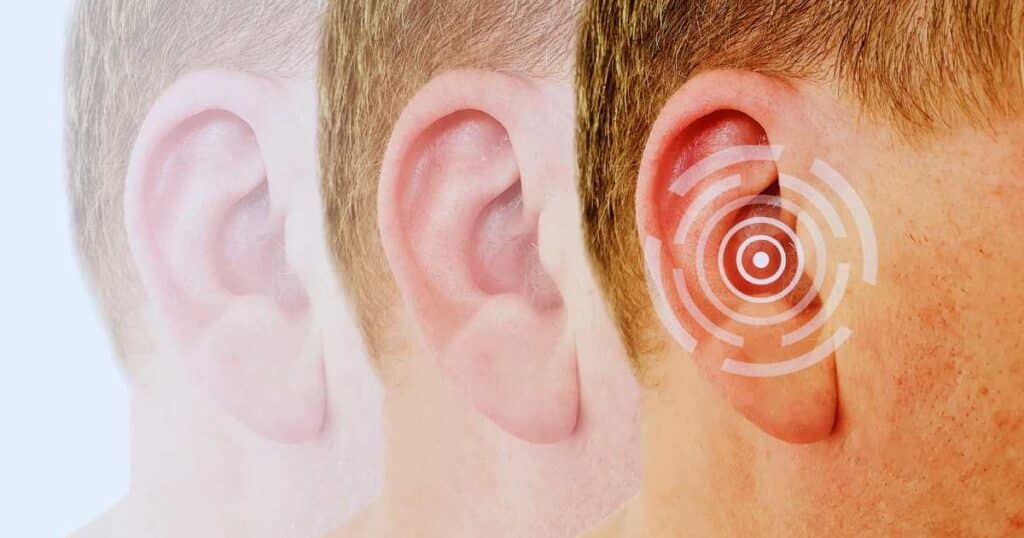
Idiopathic sudden sensorineural hearing loss (ISSNHL) refers to a rapid and unexplained deterioration of hearing, occurring over hours to days. While its precise cause often remains elusive, potential factors such as viral infections, vascular compromise, autoimmune reactions, or inner ear membrane ruptures are believed to underlie this condition.
Notably, sudden hearing loss frequently coexists with tinnitus, affecting predominantly one ear in over 90% of cases, and it causes tinnitus in the affected ear in 70% of people. Our research suggests a correlation between sudden hearing loss and an atypical migraine phenomenon, which also contributes to exacerbating tinnitus symptoms.
Treatment of sudden hearing loss is time-sensitive, constituting an ear emergency. Early intervention with steroids, administered orally or via injections behind the eardrum within 24 hours, yields success rates exceeding 70%, albeit diminishing with delayed treatment. Some recommendations include utilizing white noise during the initial stages to mitigate the onset of tinnitus. Moreover, controlling the underlying migraine process has shown promise in reducing the risk of developing tinnitus.
In a series of papers, we showed that sudden hearing loss can be treated with the same migraine-focused program that we use at NeuroMed to treat tinnitus.
2021: “Adjuvant Migraine Medications in the Treatment of Sudden Sensorineural Hearing Loss“
Abstract
Objectives/hypothesis: To examine the hearing outcomes of patients with sudden sensorineural hearing loss (SSNHL) treated with oral and intratympanic (IT) steroid only or a combination of steroid and migraine treatment. Our hypothesis was that adjuvant migraine medications may improve outcomes in SSNHL.
Methods: A retrospective chart review at a tertiary otology center was conducted to identify patients with SSNHL who received oral steroid and IT dexamethasone injection(s) with or without migraine medications (a combination of nortriptyline and topiramate).
Results: A total of 47 patients received oral steroid and IT dexamethasone injection(s) only, and 46 patients received oral steroid and IT dexamethasone injection(s) as well as migraine lifestyle changes plus a combination of nortriptyline and topiramate. There were no significant differences in demographics and baseline audiometric data between the two groups. Both groups demonstrated improvements in pure tone average (PTA) and hearing thresholds at 250 Hz and 8000 Hz posttreatment. However, compared to steroid-only group, the adjuvant migraine medications group had significantly greater improvements in hearing thresholds at the lower frequencies (250 Hz, 500 Hz, 1000 Hz). Patients in the latter cohort also had greater improvement in PTA (P = .01) and received fewer IT injections (P = .04) PTA improvement of ≥ 10 dB was observed in 36 patients (78%) in the adjuvant migraine medications group and 22 patients (46%) in the control group (P < .001).
Conclusion: In multimodal treatment of SSNHL, supplementing oral and IT steroid with migraine medications may result in greater improvements in lower frequency hearing thresholds and PTA. Furthermore, adjuvant migraine treatment can lead to decrease in number of IT injections, thus reducing procedure-related risks and complications.
2021: “Treatment of Long-term Sudden Sensorineural Hearing Loss as an Otologic Migraine Phenomenon“
Abstract
Objectives: To describe a cohort of patients presenting with long-term sudden sensorineural hearing loss (SSNHL) treated with prophylactic migraine and intratympanic steroid therapy.
Methods: Patients presenting to a neurotology clinic at least 6 weeks from SSNHL onset were included. All patients received migraine prophylactic medication (nortriptyline, topiramate, and/or verapamil) and lifestyle changes for at least 6 weeks, as well as intratympanic steroid injections, if appropriate.
Results: Twenty-one patients (43% female) with a mean age of 64 ± 11 years who presented 9 ± 8 months (median = 5) from symptom onset were included. Posttreatment hearing thresholds were significantly improved compared with pretreatment thresholds at 500 Hz (49 ± 19 dB versus 55 ± 20 dB, p = 0.01), 1000 Hz (52 ± 19 dB versus 57 ± 21 dB, p = 0.03), low-frequency pure-tone average (53 ± 15 dB versus 57 ± 17 dB, p = 0.01), and speech-frequency pure-tone average (57 ± 13 dB versus 60 ± 15 dB, p = 0.02). Posttreatment word-recognition-score (WRS) and speech-recognition-threshold (SRT) were also significantly improved (45 ± 28% versus 70 ± 28% and 57 ± 18 dB versus 50 ± 16 dB, respectively, both p < 0.01). Notably, ≥15% improvement in WRS and ≥10 dB improvement in SRT was observed in 13 (68%) and 8 (40%) patients, respectively. Of the 11 patients who presented with initial < 50% WRS, 8 (73%) had improved posttreatment >50% WRS with an average improvement of 39 ± 9%.
Conclusions: Migraine medications in addition to intratympanic steroid injections significantly improved SRT and hearing frequencies in 40% and 29% of SSNHL patients, respectively, while significant WRS recovery was observed in most (68%) patients. This suggests SSNHL may be an otologic migraine phenomenon, which may be at least partially reversible even after the traditional 30-day postonset window.
Stapedial Myoclonus, Tinnitus and Migraine
Stapedial myoclonus is a rare condition characterized by involuntary contractions of the stapedial muscle, one of the smallest muscles in the human body located within the middle ear. These contractions can cause rhythmic movements of the stapes bone, which may result in rapid, repetitive clicking or fluttering sound that occurs in synchrony with the muscle contractions, often described as similar to the sound of a typewriter or a fluttering bird’s wings.
Stapedial myoclonus is considered a cause of objective tinnitus, as opposed to sensorineural or subjective tinnitus. In the below paper, we outlined the connection between stapedial myoclonus and the migraine reaction in the brain.
2023: “Treatment of Stapedial Myoclonus as a Migraine-Related Phenomenon“
Abstract
Objective: To describe a case series of patients with stapedial myoclonus (SM) whose conditions improved after prophylactic migraine treatment.
Patients: We present seven cases of SM reported from a tertiary care neurotology clinic. All seven patients reported SM triggers similar to those of migraine headaches and suffered from concomitant headaches and/or vertigo, and were thus treated with a standard migraine protocol used at this neurotology clinic.
Intervention: Prophylactic migraine treatment.
Main outcome measures: Reduction or resolution of SM.
Results: In this series, seven patients with SM were included. Six of seven subjects were male (86%), with a mean age at presentation of 44 years. Four patients noted significant improvement in their symptoms, with a reduced frequency, duration, and intensity of their symptoms with the migraine regimen. Three patients experienced complete resolution of SM with their migraine treatment.
Conclusion: We report that treatment with prophylactic migraine treatment can provide long-term relief for patients with SM, which may suggest an etiological association between migraine and SM as well as a possible treatment for SM.
Conclusion: New Tinnitus Research Proves a Strong Migraine Connection

In all of these studies, we’ve endeavored to elucidate the way that the brain amplifies tinnitus through the migraine reaction in the brain. For a more in depth look at how this occurs, I suggest that you read our article on tinnitus and migraine HERE. We also cover this topic in our article about the #1 Misconception about tinnitus HERE.
The key takeaway is that we’re not merely establishing theoretical links between migraine and tinnitus. Much more importantly, we’re finding significant clinical improvement in tinnitus with migraine-related therapeutic interventions. At NeuroMed, we’re experts at implementing this integrative medicine approach to tinnitus rehabilitation, combining pharmaceutical and nutraceutical interventions with sound therapy, tinnitus CBT, and lifestyle medicine and are achieving clinical success in 85-90% of patients. As a tinnitus specialist, I can definitively tell you that something CAN be done about your tinnitus!




